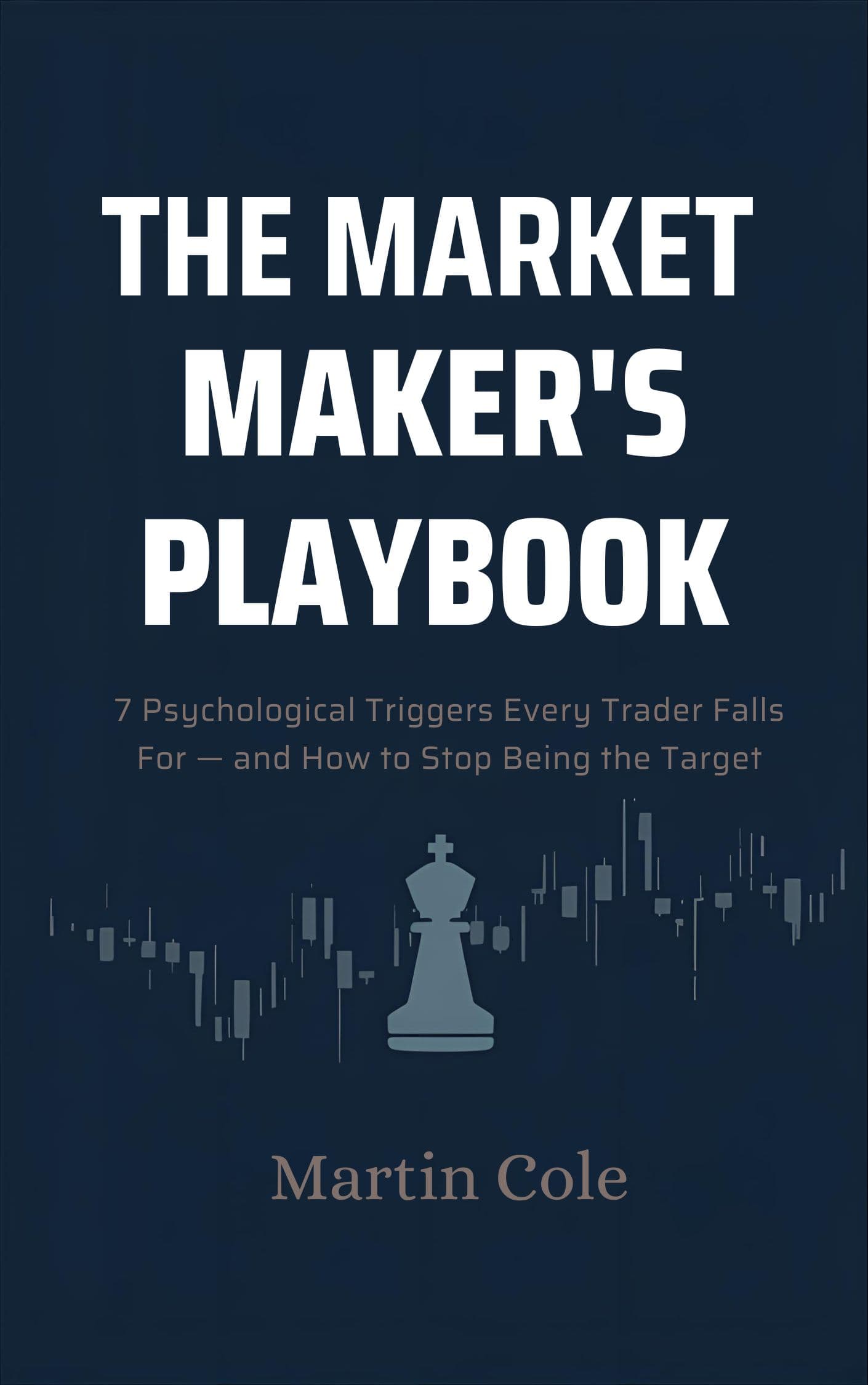AMD vs Indicators: How to Read Structure
9 min read • January 15, 2025
Most traders spend years collecting indicators—RSI, MACD, moving averages, Bollinger Bands. They layer them onto charts, hoping the perfect combination will finally make sense of the market. It won't. This article teaches you the foundation of the Market Maker Method created in 1999: reading Market Maker behavior through the AMD cycle instead of relying on lagging indicators. Trade the AMD cycle, not predictions.
The Problem with Lagging Indicators
Traditional technical indicators are calculated from historical price data. A 20-period moving average tells you where price was over the last 20 periods. RSI tells you whether price has been overbought or oversold recently. MACD shows you momentum that already happened.
All of these tools look backward. They smooth, average, and summarize the past. By the time they signal, the opportunity is often gone—or the trap is already sprung.
The Lag Problem
The Moving Average Cross Example
Imagine you're using a 50/200 moving average cross strategy. When the 50 crosses above the 200, you buy. Sounds logical, right?
But by the time that cross happens, price has already moved significantly. You're entering after the early movers have positioned, often right before a pullback. You're buying consensus, not opportunity.
What AMD Framework Trading Looks Like
AMD framework trading flips the paradigm. Instead of asking "What did price do?", you ask:
- Are we in Accumulation (market makers building positions)?
- Are we in Manipulation (belief being tested, stops hunted, retail trapped)?
- Are we in Distribution (profit release as accumulated positions are offloaded)?
These questions are forward-looking. You're reading which AMD phase is active and positioning yourself accordingly.
Real-Time AMD Structure
The Five Elements That Reveal AMD Phases
PAT Indicator visualizes the AMD cycle (Accumulation, Manipulation, Distribution) through five real-time elements. Each element reveals a different aspect of which phase is active:
1. The Floating Zone (Accumulation Flow)
The Floating Zone reveals underlying strength and weakness, showing where accumulation is building or weakening. Not averaged over 20 periods—real-time directional conviction as professional capital positions.
2. Ray Lines (Accumulation Pivots)
Ray lines show where accumulation pivots on underlying strength or weakness. They mark where the AMD cycle shifted historically and where it's likely to be tested again.
3. Pressure Points (Manipulation Signals)
Pressure Points show where conviction starts to become fractured. Early warning signs that the current trend is showing signs of fractured beliefs—classic manipulation phase behavior.
4. Buffers (Manipulation Zones)
Buffers reveal manipulation zones where market makers test belief and trap retail traders. Instead of placing stops where everyone else does (and getting hunted), you position where AMD structure actually sits.
5. Whale Markers (Distribution Signals)
Whale markers show where professional, large trading positions enter and exit (Smart Money Concept). They signal the distribution phase—when accumulated positions are released for profit.
Comparison: Traditional Indicators vs AMD Structure Reading
| Aspect | Traditional Indicators | PAT AMD Reading |
|---|---|---|
| Timing | Lagging (shows past data) | Real-time (shows current AMD phase) |
| What it shows | Price averages, oscillations | AMD cycle phases (Accumulation, Manipulation, Distribution) |
| Entry signals | After move has started | During accumulation phase |
| Manipulation visibility | Hidden in noise | Manipulation phase visible (Pressure Points, Buffers) |
| Stop placement | ATR-based, percentage-based | Buffer zones (outside manipulation zones) |
| Approach | React to signals | Read AMD cycle, trade structure |
Why This Matters
When you trade the AMD cycle instead of lagging indicators, your entire approach changes:
- You enter during accumulation—when market makers are building positions, not after distribution is obvious.
- You avoid manipulation traps, because you see the manipulation phase as it's happening (Pressure Points, Buffer tests).
- You exit during distribution, when Whale Markers signal profit release—before the reversal.
Can You Use Both?
Some traders ask: "Can I still use moving averages or RSI alongside PAT?" Sure. But here's the hierarchy:
- AMD structure first. What phase are we in? Is the Floating Zone showing accumulation? Are Pressure Points signaling manipulation? Are Whale Markers showing distribution?
- Indicators second. If you want to cross-check with a moving average or volume profile, fine. But don't let lagging data override real-time AMD structure.
The danger is letting old habits pull you back into lag-based decision-making. If the Floating Zone shows accumulation building but your MACD is still "overbought," which do you trust? The real-time AMD cycle, always.
The Paradigm Shift
Most traders never make this shift. They keep adding indicators, hoping the next one will finally "work." But the problem isn't the indicator—it's the paradigm.
You can't fix a backward-looking approach by adding more backward-looking tools. You need to look forward—at the AMD cycle as it unfolds. Accumulation forming. Manipulation testing. Distribution releasing.
What You'll Notice
When you make this shift, several things happen:
- Your charts get simpler. You remove the clutter.
- Your decisions get clearer. You're not juggling conflicting signals.
- Your timing improves. You're early instead of late.
- Your confidence grows. You're reading structure, not guessing.
Final Thought
Indicators aren't evil. But they're fundamentally limited by their design: they lag. If you want to trade the present—where the opportunity actually is—you need tools that show you the present.
That's the AMD framework. That's structure. That's the shift Martin Cole created in 1999.
Continue your path

Free Download: The Market Maker's Playbook
Learn the 7 psychological triggers market makers use to trap retail traders—and how to stop being the target.
Free instant download. No spam, ever.